
Following our previous visit to Massachusetts-based Murdough Design, we are moving our Meet Your Next Employer series to Oregon this week to explore the work of Waechter Architecture.
Launched in 2007, and based in Portland, the firm has built a portfolio orientated around clarity of composition, material, systems, and experience. In a 2019 edition of our Studio Snapshot series, founder Ben Waechter told Archinect: “Since the beginning, the focus of the office has been on design clarity. I think this will always be the case. What’s changed over time is how good we are at achieving it. We are always improving. Our approach is to refine and distill—rather than reinvent—ourselves.”
Over on Archinect Jobs, the firm is currently hiring for a Project Designer to join its Portland office. For candidates interested in applying for the position, or anybody interested in learning more about the firm’s output, we have rounded up four projects by Waechter Architecture that exemplify the firm’s ethos.

Located on an active wine estate in Oregon’s wine country, the Furioso Vineyards project consists of the renovation and expansion of a pre-existing winery and the addition of a new tasting room and additional public amenities. The existing winery was expanded and re-clad with a vertical blackened cedar screen, covering opaque wall surfaces and open-air mechanical rooms. During the day, the building takes on a solid appearance while, at night, the screen takes on an “ethereal, translucent character” with backlit illumination of the vertical cedar ribs.
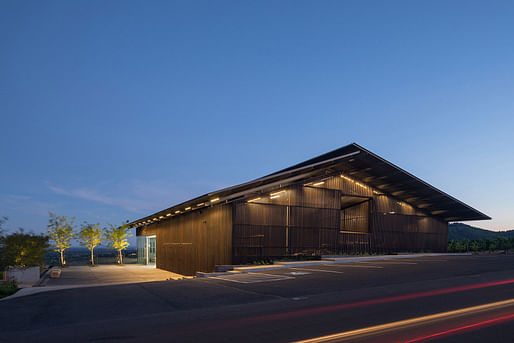
“Bringing together the old and new elements of the estate, a bold new roof unifies the vineyard with a singular form and iconic image,” the team adds. “The roof is made of six-inch deep corrugated metal and cantilevers over the body of the building, letting air and light pass freely between the two. In order to keep the roof planes pure, mechanical venting is handled in the space between. In the summer, the cantilever perfectly shades the glass tasting room from direct sun.”

The Society Hotel in Bingen responds to a range of contexts, occupying a site on the Columbia River close to both industrial and residential areas. The scale of the hotel was controlled in order to respect the privacy of its residential neighbors, while a concept dubbed ‘Edited Panorama’ was developed to use the massing of the new hotel to produce a series of distinct outward views.
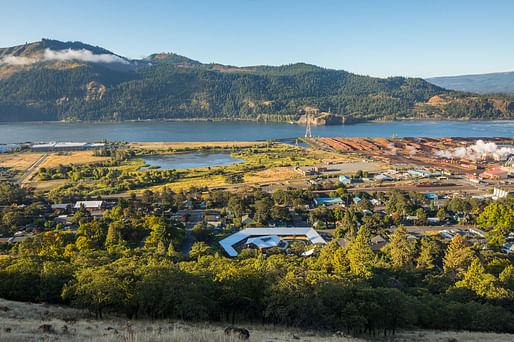
“While the project involves an adaptive reuse of an existing school, the primary site of the design intervention is a ring of cabins, sharing a single roof, defining a courtyard, through which the town and landscape become framed,” the team explains. “Within this ring, a community building provides additional shared spa amenities for the hotel's visitors. Defined by four large piers, this central structure offers four key perspectives out through the courtyard and ring.”
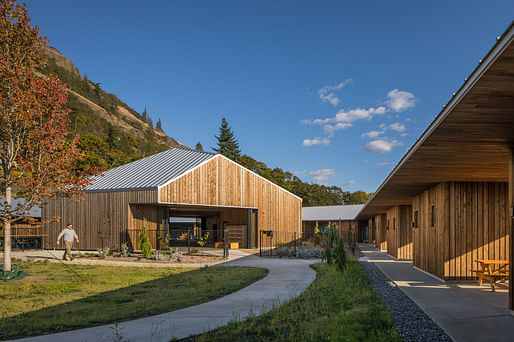
Situated on a narrow, steep urban lot previously considered “unbuildable,” the Tower House was shaped with the goal of building a cost-effective home that took advantage of views while maintaining privacy. The resulting home touches the ground lightly to reduce foundation costs, above which sit three main rooms finished in oil-rubbed quarter-sawn oak, and lit by picture windows and loggias.

“The cladding of the house is seen as a sleeve as if it were a stretchable garment pulled down tight over the structure,” the team explains. “It is made of black vertical corrugated steel with rounded corners eliminating the need for corner trim. It is a continuous, uninterrupted surface punctuated only by the window openings and loggias.”
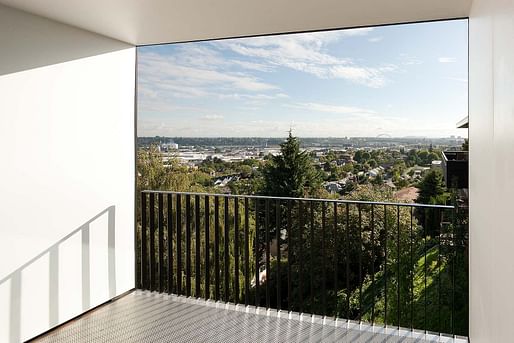
Located on an exposed lot in Portland, the Pavilion House was designed to balance privacy and natural light. Externally, the home is clad in standing seam white metal panels, wrapping ground floor ‘legs’ that give the impression that the house has been “reductively sculpted from a single mass.” Inside, an open floor plan expands to outdoor living through floor-to-ceiling glass and doors while a polished concrete floor is cast on grade, creating a seamless transition to the surrounding yard.
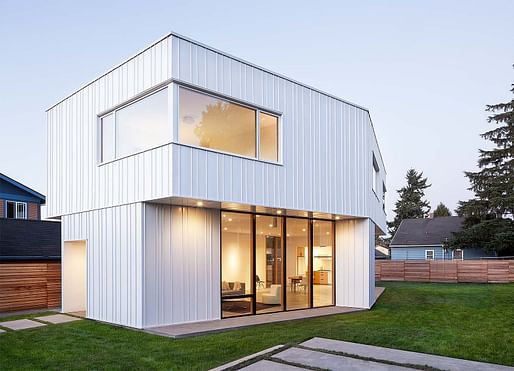
“Our clients wanted a glass house,” the team explains. “The difficulty was that they wanted this house placed on a visually exposed 50’ x 100’ city lot that they owned in NE Portland. This posed the challenge of designing a glass house with privacy. Our solution was to design a pavilion-like structure in which the body of the house is supported by 4 ten-foot-tall “legs.” The legs are placed strategically to block unwanted views and provide privacy.”
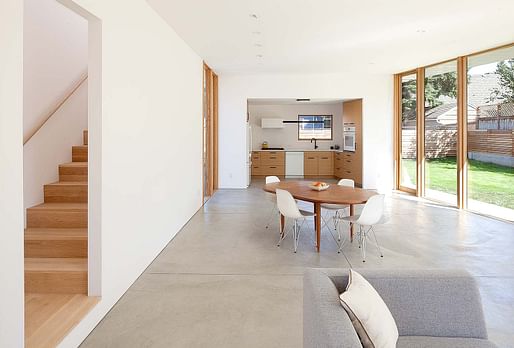
Meet Your Next Employer is one of a number of ongoing weekly series showcasing the opportunities available on our industry-leading job board. Our *Job Highlights* series looks at intriguing and topical employment opportunities currently available on Archinect Jobs, while our weekly roundups curate job opportunities by location, career level, and job description.
No Comments
Block this user
Are you sure you want to block this user and hide all related comments throughout the site?
Archinect
This is your first comment on Archinect. Your comment will be visible once approved.